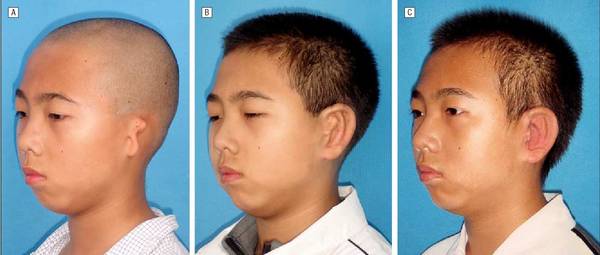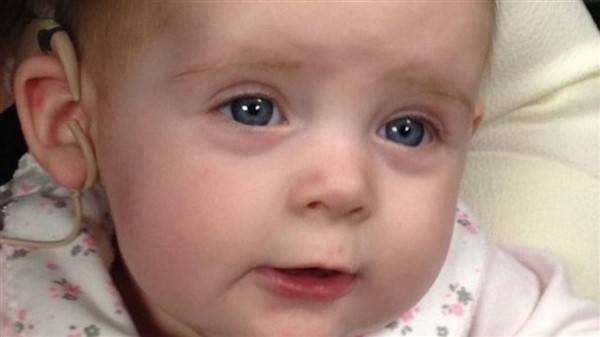As per the fact sheet dated March 2020 released by the World Health Organization, 34 million children worldwide suffer from Hearing loss. Though Hearing loss in children is unfortunate, 60% of the cases are curable if diagnosed and treated in time.
It is the parent’s responsibility to be observant and detect signs of hearing loss in children. Toddlers cannot express themselves until they are a little older. Parents should note the small tell-tale signs to gauge the overall ear health of the child. In this article, we will offer some tips on detecting hearing loss in babies.
As parents, we should be extremely vigilant about our children and detect early signs of hearing loss in toddlers, especially if it is a mild hearing loss in a child. Severe or profound deafness, if any, is easier to identify.
Hearing loss in children is the child’s inability to hear sound spoken in a normal speech range. It is either hereditary or an acquired hearing loss.
How Do I Know If My Baby Has A Hearing Problem?
The signs of hearing loss in children are relatively easier to detect; however; detection of deafness in babies requires keen observation.
The table below indicates the baby’s speech development milestones.
| Baby’s Age | Actions And Activities |
|---|---|
| 3 Months | The baby should recognise the parents voice and respond |
| loud noise should startle the baby. | |
| 6 months | The baby recognises all the familiar sounds and voices of all the family members |
| The baby makes sounds in response to the pampering by parents | |
| 9 Months | The baby understands a few words like yes, no, mummy, daddy |
| 12 Months | The baby speaks a few words clearly |
| 18 Months | The toddler speaks a few short sentences |
| The toddler follows simple instructions | |
| 24 Months | The spoken word count should increase to around 300 words |
| Should be able to speak clear sentences and converse a little | |
| Should attentively listen to stories being read and listen to songs |
How Do I Know If My Child Has A Hearing Problem?
There are always tell-tale signs that parents can observe and make a mental note of; if these signs are too frequent, it could indicate a hearing loss in a child.
- At times the child does not respond when called out. Kids occasionally do ignore if they are too engrossed watching television or playing with their toys. However, if it happens too often, it is an indication of hearing loss in kids.
- The child hears you but has a questioning look on his or her face or says – “Did you call me?” Or “what did you say?” This expression conveys that the child has heard but has not understood.
- The child tends to lean forward to hear or turns his head to hear with the better ear. This action is similar to how the elders with a hearing loss behave.
- If the child looks at you keenly while you are speaking, it is a sign of hearing loss in a child. They are trying to catch the words or lip read.
- The child speaks loudly. Since we all hear ourselves when we speak to know how loudly we are talking, due to the deafness in children, they hear themselves faintly and tend to speak loudly.
- If they always insist on increasing the television volume, it is a vital sign of hearing loss in children.
- If the child is attending school and is not paying attention in the classroom or is falling behind in studies, it is a sign that they cannot hear and understand the teacher.
Read our blog on What is Hearing Loss? All FAQs Answered for all your queries on the topic of hearing loss.
How Do You Test A Child’s Hearing?
- Free Field Pediatric Hearing Test
- Oto Acoustic Emission
- ABR or Auditory Brain Stem Response
It is compulsory to conduct a newborn hearing screening test for babies in most countries before they leave the hospital premises.
Let us get familiar with the hearing tests for babies.
1. Free Field Pediatric Hearing Test
The free field test is a simple basic hearing test; Tones of different frequencies are presented from a calibrated source of sound held about 9 inches away from the baby’s ear. The audiologist observes the baby’s reaction to determine if the baby can hear.
2. OAE or Otoacoustic Emission Test
The OAE test is to check the functioning of the inner ear. The inner ear responds and emits a faint sound when presented with an external sound. The OAE probe captures the sound produced by the inner ear; this action decides if the baby can hear well. OAE is a newborn hearing screening test and gives a “pass” or “fail” result in under a minute. In case the result is “fail,” the pediatrician will recommend further tests.
3. Auditory Brainstem Response Test
The audiologist conducts the ABR while the baby is asleep. Electrodes are connected to observe the activity in the brain when the sound reaches the inner ear. The test checks the pathways in the brain responsible for hearing.
Hearing Tests For Children
The following are the hearing tests for children.
Pure Tone Audiometry
Pure Tone audiometry is a subjective test. The child has to respond or indicate if he or she can hear the tones presented by the audiologist. Based on the child’s response, the audiologist prepares an audiogram, which shows the deafness levels at various frequencies.
Tympanometry
The tympanometry test checks the functioning of the middle ear; the test checks the movement of the eardrum. The eardrum movement helps the audiologist diagnose if the child has a hole in the eardrum, or fluid accumulation, or an infection.
Parents should insist on hearing tests for children every six months.
What Can Cause Hearing Loss In A Child?
There are several reasons for hearing loss in infants; some of them are as follows;
- Otitis media or Infection and inflammation of the middle ear. Otitis media is widespread and affects 75% of the children by the time they are three years old1.
- Hole in the eardrum
- Accidental head injury
- Ototoxicity or deafness caused by certain medicines
- Viral or bacterial meningitis or mumps
Causes of Genetic Hearing loss Or Hereditary Hearing Loss
- Premature birth
- Mother suffering from diabetes
- Complications during delivery. For example, the lack of oxygen
- Alcohol or drug abuse by the mother during pregnancy
- Inheriting the hearing loss gene from one of the parents (Autosomal dominant hearing loss)
- Down syndrome, Usher syndrome, Crouzon syndrome
- Ear deformity (Anotia or Microtia)
Is There A Cure For Deafness In Babies?
It is perhaps an unfortunate moment when the parents detect symptoms of hearing loss in their children. Congenital disabilities or birth defects responsible for hearing loss in babies like Anotia2 (the external part of the ear are missing) and Microtia2 (the external parts of the ear are underdeveloped).
The physical deformity at times causes the ear canal to collapse or close. A collapsed ear canal will not allow the sound waves to reach the inner ear. In this case, the doctors advise ear reconstruction surgery (Otoplasty) to reconstruct the deformed ear or the collapsed ear canal. Otitis media or middle ear infection is temporary and is curable with proper treatment.

What Is The Hearing Loss Treatment For Children?
Besides the treatments mentioned above, assistive listening devices like hearing aids and Cochlear implants help the child to hear. Depending on the type of hearing loss and the severity of the loss, the audiologist will prescribe a suitable listening device. Read about the functioning of the Cochlear implant. Fitting an implant or a hearing aid will help the child pick up speech and learn to speak. The ability to hear will help the child to attend school and lead a near-normal life.
Read our blog on Cochlear Implant FAQs – All You Need to Know for all your queries on the topic of Cochlear Implants.
Audiologists prescribe hearing aids in the case of mild hearing loss in children. Hearing aids help to amplify the sound enabling the child to hear. A speech and language pathologist is required in the initial stages to help the child understand and to speak. Children and babies as young as six months of age have undergone cochlear transplant surgery.

Evie Smith from the United Kingdom and Kadence Lane from Mississippi were around three months old when they underwent cochlear implant surgery.
Babies with hearing aids are not an uncommon sight. Reputed brands manufacture pediatric hearing aids which are tamper-proof, durable, small in size and have an indicator so the parents can see whether the hearing aid is on or off.
Learning Sign language is another option parents should insist on, Sign language helps children with hearing issues to communicate with each other.
How To Prevent Hearing Loss In Toddlers
- Pediatricians recommend hearing tests every six months
- Make sure that the child takes all the necessary vaccines
- Mothers should lead a healthy lifestyle and consume a balanced diet during pregnancy
- Do not expose the child to loud sounds. Keep the volume of music and television at a low level.
- Toddlers should wear earplugs or noise-excluding ear muffs while attending a sporting event
Tips For The Parents Of Babies With Hearing Aids.
- The hearing aids have to be worn consistently for the child’s brain to get accustomed to the sounds.
- Parents must take efforts to talk to their children, as the brain develops quite fast in an infant, the child will pick up speech much faster as adaptation and development are fast.
- The parents should ensure that the device fits well, and no feedback sound is heard, or the ear mould does not hurt the child.
- Speech therapy is necessary as it helps the child immensely.
Though it is challenging for the parents, timely detection of hearing loss in children and speech therapy can make a big difference in the child’s development.
Reference:
